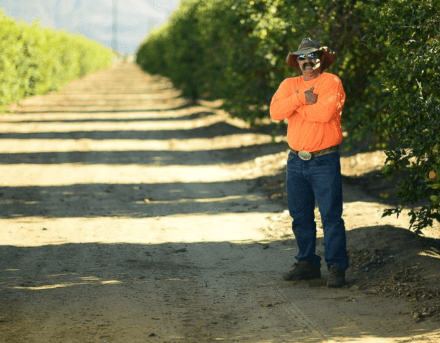Tree Teepee Net Worth: The Agricultural Product’s Financial Value

The financial landscape surrounding tree teepees presents a compelling case for their valuation as an agricultural product. As sustainability becomes a central theme in modern farming, the demand for tree teepees is witnessing significant growth, fueled by consumer preference for environmentally conscious solutions. Understanding the production costs, market demand, and potential revenue streams is essential for evaluating their overall worth. However, the question remains: how do these factors interplay to define the true financial value of tree teepees in an ever-evolving agricultural market?
Overview of Tree Teepees
Tree teepees, designed as protective structures for young saplings, serve a dual purpose of fostering growth while simultaneously mitigating environmental stressors, thereby enhancing reforestation efforts and ecological sustainability.
The benefits of tree teepees manifest in improved survival rates and accelerated growth.
Various tree teepee designs, tailored to specific climates and species, optimize these benefits, ensuring effective implementation in diverse ecological contexts.
See also: Davante Adams Net Worth: The NFL Receiver’s Financial Success
Market Demand for Tree Teepees
The market demand for Tree Teepees is increasingly shaped by a growing interest in eco-friendly products, reflecting a broader consumer shift towards sustainable living.
Additionally, seasonal sales trends indicate that demand peaks during specific times of the year, suggesting potential opportunities for targeted marketing strategies.
Understanding these dynamics is crucial for stakeholders aiming to optimize their positioning within this niche market.
Increasing Eco-Friendly Interest
Growing consumer awareness of environmental sustainability has significantly boosted market demand for eco-friendly structures like tree teepees. With a shift towards sustainable farming, consumer preferences now favor products that promote ecological balance. This trend is reflected in the increasing investments in sustainable agricultural practices, which align with the desire for freedom from conventional farming methods.
| Factor | Impact on Demand |
|---|---|
| Eco-Friendly Materials | High |
| Sustainable Farming Practices | Growing |
| Consumer Awareness | Increasing |
| Policy Support | Strengthening |
Seasonal Sales Trends
Market demand for tree teepees exhibits distinct seasonal trends, influenced by factors such as climate variations, agricultural cycles, and consumer purchasing behaviors aligned with eco-friendly initiatives.
Analyzing sales patterns reveals significant seasonal fluctuations, with peak demand typically occurring in spring and early summer.
Policymakers must recognize these trends to support sustainable agricultural practices and promote the economic viability of tree teepees within eco-conscious markets.
Production Costs and Pricing
Production costs for Tree Teepees are influenced by various factors, including material sourcing, manufacturing processes, and labor expenses, which collectively determine the pricing strategy necessary to maintain competitive advantage in the outdoor gardening sector.
Effective cost management and enhanced production efficiency are crucial to optimizing profit margins, allowing businesses to adapt to market fluctuations while ensuring sustainable growth and consumer accessibility in a dynamic agricultural landscape.
Revenue Potential in Agriculture
The revenue potential in agriculture, particularly through the integration of innovative products like Tree Teepees, underscores the significance of maximizing crop yield and enhancing plant health, which can be achieved through strategic investment and effective resource allocation.
Key areas for sustainable farming include:
- Increased productivity through agricultural innovations.
- Long-term cost reductions.
- Enhanced ecosystem resilience.
These factors collectively drive profitability in modern agriculture.
Competitive Analysis of Tree Teepees
A comprehensive competitive analysis of Tree Teepees reveals critical insights into market positioning, product differentiation, and the strategic advantages held by key players in the agricultural sector.
Key competitors leverage innovative designs and sustainable materials, enhancing their competitive advantages.
This dynamic landscape necessitates ongoing assessment of market trends, enabling companies to refine strategies and maintain leadership in an increasingly eco-conscious marketplace.
Environmental Impact and Value
The Tree Teepee system presents significant environmental benefits, primarily through its capacity for carbon sequestration, which is vital in mitigating climate change.
Additionally, it fosters biodiversity enhancement by providing habitats for various species, thereby contributing to ecological balance.
Furthermore, the integration of Tree Teepees into land management practices can lead to improved soil health, promoting sustainable agricultural practices and enhancing ecosystem resilience.
Carbon Sequestration Benefits
While various environmental strategies are implemented to mitigate climate change, the carbon sequestration benefits of tree teepees present a compelling case for enhancing carbon capture and improving ecosystem health.
The potential advantages include:
- Increased carbon storage capacity.
- Enhanced soil quality and moisture retention.
- Improved local air quality.
These ecological benefits underscore the need for innovative agricultural practices that align with sustainable development goals.
Biodiversity Enhancement Potential
Numerous studies indicate that tree teepees can significantly enhance local biodiversity by creating microhabitats that support a variety of flora and fauna, thereby fostering ecosystem resilience and stability.
They serve as effective biodiversity corridors, facilitating species movement and genetic exchange.
Additionally, tree teepees play a pivotal role in habitat restoration, contributing to the overall health and sustainability of ecosystems in agricultural landscapes.
Soil Health Improvement
Tree teepees contribute to soil health improvement by enhancing organic matter accumulation and promoting beneficial microbial activity, which are essential for nutrient cycling and soil structure stability. Their impact is evident in:
- Increased soil moisture retention.
- Enhanced nutrient retention capabilities.
- Improvement in overall soil biodiversity.
These factors collectively foster resilient ecosystems, supporting agricultural sustainability and empowering farmer autonomy in land stewardship.
Future Trends in Agricultural Products
Emerging agricultural technologies and sustainable practices are poised to reshape the future landscape of agricultural products, driving enhanced productivity and environmental stewardship.
The integration of agroforestry benefits will play a crucial role in promoting biodiversity, improving soil health, and fostering resilience against climate change.
Policymakers must prioritize these innovations to ensure sustainable growth and empower farmers, ultimately leading to a more equitable agricultural economy.
Investment Opportunities in Tree Teepees
Investing in tree teepees presents a unique opportunity to enhance sustainable forestry practices while simultaneously addressing the growing demand for eco-friendly agricultural solutions.
Potential investors should consider:
- The increasing market for sustainable farming products.
- Government incentives supporting eco-friendly initiatives.
- Long-term returns from innovative investment strategies.
These factors collectively position tree teepees as a viable investment within the expanding green economy.
Conclusion
The rising financial significance of tree teepees juxtaposes the urgent need for sustainable agricultural solutions, presenting a dual opportunity for investors and environmental advocates alike.
As market demand intensifies and production costs stabilize, the revenue potential expands, underscoring their role in the green economy.
Government incentives further solidify their appeal, fostering a landscape where ecological responsibility and financial profitability coexist, paving the way for innovative investment avenues in agricultural products that prioritize both profit and planet.



